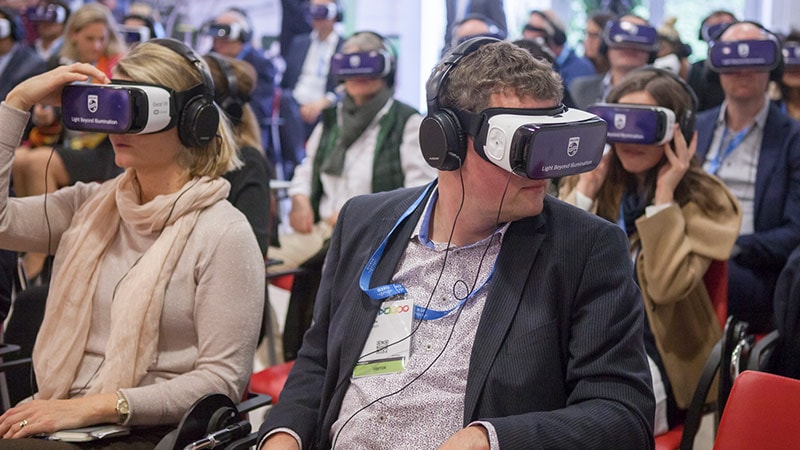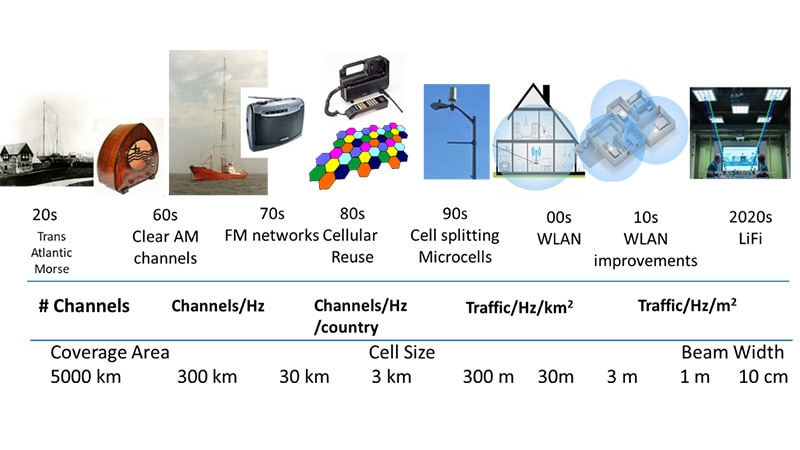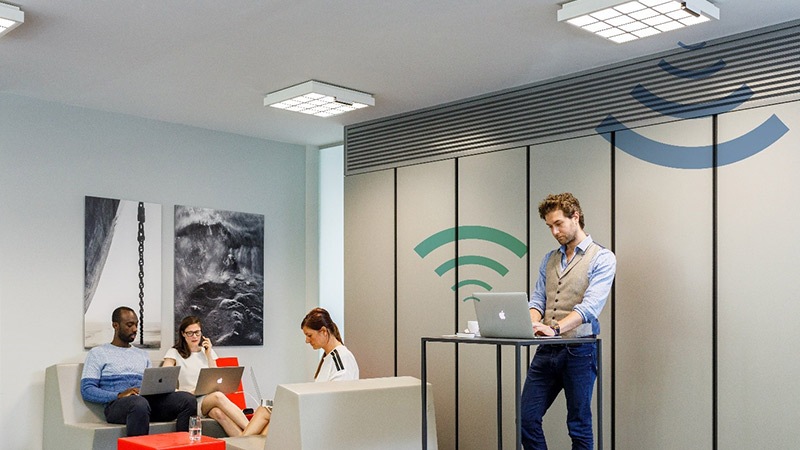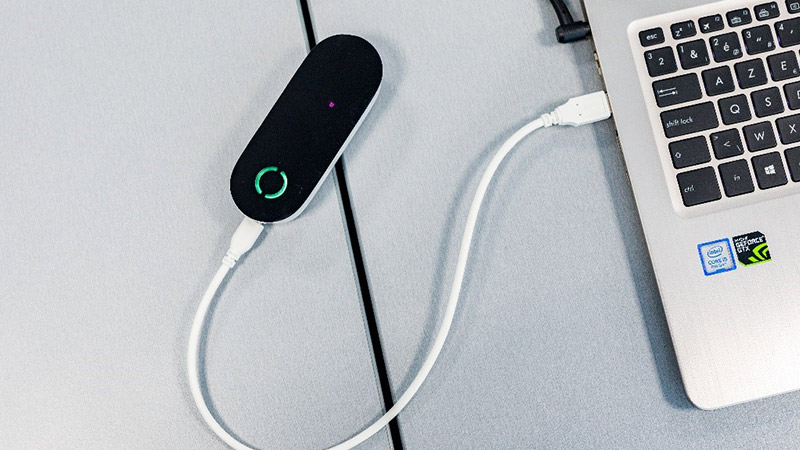The transition from radio-based communication, such as WiFi, to LiFi, is the logical consequence of a long-lasting trend of data intensification in wireless communication.
The step towards light-wave systems, with their well-defined coverage, fulfills the growing need and demands for higher bit rates and interference-free, rock-solid connections.
The growth of wireless communication is often described as a trend that started in the last decade or two, but a deeper investigation reveals that the trend-lines are exponential, ever since Marconi sent his Morse code across the Atlantic.
While the use of radio waves was initially a privilege for broadcasters, and for the military to communicate with airplanes and ships, today it’s an everyday necessity. Many teenagers would rather spend a day without food than a day without WiFi!
The pace of technological change has been relentless. Early cell phones could only exchange text (SMS) messages of 160 characters, but today four and a half million YouTube videos are consumed every minute, many of them on mobile devices.
Trendwatchers identify Ultra High Definition TV and 3D-video as drivers spurring on the insatiable demand for communication and bandwidth. While virtual reality games, with instant interaction, will become widespread, higher resolution picture quality may lose its role as the only driver for higher video bit rates, as we have already attained impressive quality.
But in gaming, low latency is demanded to bypass even the slightest delays of a few milliseconds. Ever higher bit rates are needed to carry uncompressed, latency-free video.










